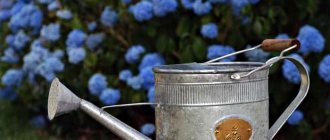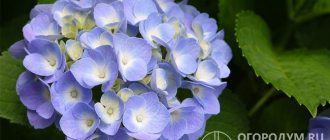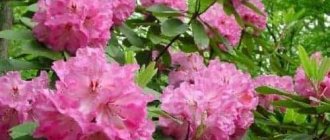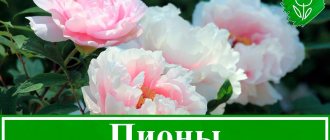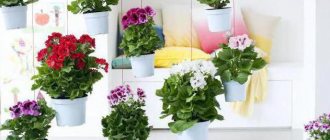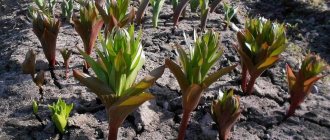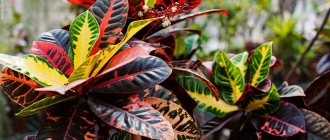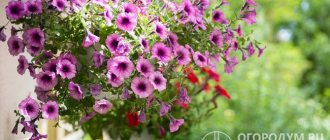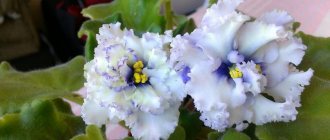Most summer residents and gardeners believe that flowering stimulants are not necessary and natural. The plant will independently understand when and how to carry out the flowering process. And also fruiting. However, these tools are good. And they greatly facilitate the work of gardeners and summer residents.
No one argues that nothing good should be expected when purchasing the very first drug and using it. It is necessary to approach the choice of a product that stimulates growth, flowering and fruiting wisely. And then your site will sparkle with new colors.
Flowering stimulator: what kind of drugs?
Flowering stimulants are a group of products that contain organic or synthetic hormones. They help increase the number of buds on a representative of herbaceous crops. They also contribute to the rapid start of formation and fruit bearing.
The formation of new buds is caused by hormones. For example, florigen. It consists of gibberellin and several anthesins. Gibberellin helps stimulate plants that require long daylight hours to bloom. And vernaline helps stimulate 2-year-old crops. And also in the winter season they are in the open ground at low temperatures.
Of course, nature has independently tried to ensure that phytohormones are formed in plants. For example, in seeds or in the upper part of plants that have been growing for many years. However, their number is very small. As a rule, it is barely enough for flowering and fruiting. But there is not enough to realize all the ideas of summer residents and gardeners.
Retardants for indoor plants
Houseplants and flowers need feeding and timely care no less than their garden and garden relatives. During the period of formation of ovaries, they need careful care and attention; without additional vitamins, plantings will not be able to bloom and bear fruit effectively. Several conditions are important for the intensive genesis of flowers: lighting, age and the necessary reserves of nutrients. If these conditions are not fully met, the addition of phytohormones will promote the rapid release of the ovary, flowering and formation of the fruit.
The color development stage is an important moment for the body. Seedlings need enhanced nutrition, which differs in composition from the fertilizer used during the growing season. A large amount of nitrogen supplied during seed planting and germination interferes with flower development during bud opening. It is necessary to focus on phosphorus supplements, but this is not the only accelerator needed for active flowering. Therefore, the creators of stimulating substances are developing original formulations of drugs that will help to obtain rich ovaries, then full-fledged flowers, and abundant fruiting.
Flowering stimulants for indoor plants containing sugar become faithful assistants in the birth of flowers. Some of them, for example, Top Max, immunostimulant, Fish-Mix bioflora enhancer, consist of organic oils and plant extracts that increase the number of ovaries. These and preparations similar in composition help to increase the future harvest, promoting growth, strengthening the immune system, and the formation of new buds.
Advantages of using flowering stimulants
For abundant flowering and fruit bearing of representatives of herbaceous crops on your site, it is necessary to use flowering stimulants. These products are prepared from coal and peat. And also by other artificial methods.
The most effective are biological or natural remedies. Because they do not accumulate in the soil. And also, in addition to phytohormones, they include mixtures of vitamins.
In addition to its main purpose, flowering stimulants for plants and flowers have several more effects:
- improve the immunity of representatives of herbaceous crops;
- bring the fruits to full ripeness very quickly;
- improve the taste of the crop. They also increase the amount of vitamins in it;
- reduce the amount of nitrates in the crop.
Basic feeding rules
In order for the use of drugs to enhance the growth and flowering of buds to benefit the crop, it is useful to consider several recommendations for their use:
- Follow the instructions on the package. Thus, the grower will not harm the crop, and it will develop faster. You should not expect that as the dosage increases, the buds will begin to appear faster and bloom more luxuriantly. You can get the opposite effect - depressing.
- If several stimulants are used, you need to maintain an interval between their use. Otherwise, the effect of one drug will overlap with the effect of the other.
Not a single stimulant or supplement can compensate for the deficiency of all factors necessary for crop growth and bud development.
These factors include:
- sunlight,
- regular watering,
- temperature regime,
- balanced soil composition.
Therefore, the use of stimulating drugs should be justified and used when other methods of activating bud growth are not effective.
Flowering stimulator: how to use correctly?
Flowering stimulating agents are used using different methods. As a rule, solutions of the product are used that are prepared strictly according to the instructions. And also passed through several layers of gauze. Each plant requires its own portion of the drug. Therefore, we do not recommend going beyond the norm.
In addition, there are rules for the use of flowering stimulants for all crops:
- The drugs should be used exclusively on days without any precipitation. And also without wind;
- the drug should be at room temperature. To prevent the plant from being stressed;
- Flowering stimulating drugs are not phytotoxic. Summer residents are required to have safety glasses, a mask and clothing.
The most effective flowering stimulants
On the shelves of specialized stores you can see a huge number of similar drugs. But you can understand which of them are truly effective only by testing them on the site. You can also find a list of proven means on the Internet.
Before using any product, read the instructions carefully! Do not go beyond the norms of proportions. Do not forget that all representatives of herbaceous crops require the required dosage of drugs.
Bio Bloom
Flowering stimulator for plants Bio Bloom: photo
An entirely natural product that stimulates the flowering process. Helps increase yield by 20%. Increases plant immunity. It also reduces its level of sensitivity to low temperatures.
The product increases calcium assimilation. Helps stimulate the life process of microorganisms in the soil. It can also be used on representatives of herbaceous crops with variegated foliage to give a more decorative appearance.
Usage : add 2 ml of product to 10 liters of water. Use on fruit-bearing trees and shrubs during flowering. Vegetables are usually processed at the beginning of the flowering process. And also at the moment of formation of the ovaries.
Drug Delta New Cannabiogen Delta
Flowering stimulator for plants Delta New: photo
This product is a combination of hormones, vitamins, and amino acids. And also nutrients. Helps stimulate flowering, improves the taste of the crop and its aroma. It also increases the plant’s immunity.
Usage : add 4 – 6 ml of product to 1 liter of water. Spray the plant three times. 7 days before flowering begins. At the very beginning of the flowering process. And also a week later.
Drug Explod
Flowering stimulator for plants Explod: photo
Increases the power of the flowering process and the quality of plant growth. As well as the level of resistance to various infectious diseases and insect parasites. Increases the level of glucose produced. Which helps improve the taste of the crop. Generally promotes chlorophyll production in foliage.
Usage : add 1 – 1.5 ml of product to 10 liters of water at room temperature. It is necessary to spray trees and bushes that bear fruit during the flowering process. As a rule, vegetables are processed at the very beginning of flowering and at the moment of ovary formation.
Scope of application, timing of application, forms of fertilizers
As the name implies, fertilizers for flowering plants are used to nourish those domestic plants whose main value is the luxurious flowers that adorn the crown.
At first glance, it seems that it is necessary to apply such fertilizers at the moment when the plant is actively blooming. But this statement is not entirely true. The flowering stage is preceded by the period of bud laying. Both budding and flowering are times when the plant expends a lot of vitality, so it is necessary to fertilize in both periods.
For most domestic flora, bud formation and flowering occur in the warm season - spring and autumn. It is at this time that green pets require feeding for beautiful flowering ones, giving them the minerals necessary for flowering. During the growing season (growth of green mass) and dormancy, when the plant is resting, fertilizer should not be applied.
[!] Please note that the formation of buds in all kinds of beautifully flowering houseplants can occur at different times. For example, azalea forms future flower buds in the fall and blooms in winter, so this representative of indoor flora should be fed in the cold season.
In general, before using fertilizers for beautiful flowering plants, you should carefully study the life cycle of the plant.
Fertilizers for flowering plants are available in several forms. In stores you can find:
- liquid fertilizers;
- fertilizers in the form of sticks and tablets;
- granular and powdered fertilizers.
Liquid form is the most common and most popular option. They are convenient to breed, store and use. Fertilizers in sticks and tablets are very easy to use: you just need to stick them into the ground. Water entering during watering slightly dissolves the tablet or stick, so the fertilizer reaches the roots. Granules and powders are the most economical form, used when there are a lot of plants.
Tips for using fertilizers for beautiful flowering plants
Experienced flower growers know exactly how to use fertilizers for flowering flowers. Beginners in floriculture always have doubts and ask a lot of questions on forums. Especially for those who are just beginning to be interested in house plants, here are some simple tips:
- Choose only well-known, proven brands that have been on the market for a long time.
- Always read the instructions carefully and do not exceed the concentration specified by the manufacturer.
- Apply liquid fertilizer only a few hours after intensively watering the plant. Fertilizer poured into dry soil can burn the roots.
- You can combine fertilizing the plant and watering. To do this, dilute the fertilizer in water for irrigation in a 1:1 ratio.
- Use fertilizer in the form of sticks only at the edge of the bowl, so that they do not come into contact with the roots.
- Do not apply fertilizer immediately after transplanting the plant. Take a break for 2-3 weeks.
- Phosphorus and potassium are not absorbed by the leaves, so it is better not to apply fertilizers on the leaves for beautiful flowering plants.
- Unused liquid fertilizer can be frozen.
Hesi Super Vit
Flowering stimulator for plants Hesi Super Vit: photo
The drug is completely organic with a high level of concentrate. Stimulates the formation of green foliage. Increases the number of buds. Helps plants more easily absorb the sun's energy. Saturates them with amino acids and hormones. And also nutrients.
Usage : add 1 drop of product to 4.5 liters of water. Use the entire growing season with a time interval of 10 - 14 days. Spray the foliage or moisten the soil.
Flowering stimulator Ripen
Flowering stimulator for plants Ripen: photo
Promotes rapid ripening of the crop. It also provides gardeners with early fruits. Helps break down nitrates in the tissues of grass crops. Helps improve the taste of the product.
Usage : Dilute 5 – 6 ml of product in 1 liter of water. Apply in the last week of flowering.
Drug Top – Max
Flowering stimulator for plants Top-max: photo
A natural product containing humic acid. Increases the number of buds and ovaries. Improves the taste of the crop and its aroma. It also increases the plant’s immunity.
Usage : add 1 – 3 ml of product to 1 liter of water. During flowering, pour the preparation into the soil while it is moistened. As a rule, 500 ml - 3 liters are used for each plant.
About growth stimulants. Part 2 - flowering and aroma
We continue the series of articles about various plant growth stimulants. In the previous article, we got acquainted with the principles of action of root formation and metabolism stimulants. Today we will talk about stimulating flowering and accumulation of active substances (note: read improving the taste and aroma of the crop).
The flowering period is the process of plant reproduction, which begins with the formation of flower primordia in the buds, followed by their appearance, pollination and flowering, resulting in the appearance of seeds and fruits, allowing the plants to continue their lineage. During the flowering period, the plant requires enormous strength to invest maximum resources in the formation of its future offspring. Therefore, at this stage of development, it is important to pay close attention and care to it.
Plants bloom only when several important conditions coincide: light, age and sufficient energy. Plants perceive light not only as a source of energy, but also as a signal characterizing environmental conditions. When day length reaches optimal parameters, the interaction of photoreceptors and other proteins in the leaves begins, leading to the production of FT protein, which then migrates to the tip of the shoot, where it triggers the formation of flowers instead of leaves. Therefore, a reduction in daylight hours relative to the vegetative phase will be perceived by the plant as a message that conditions are deteriorating, which means it is time to bloom in order to leave offspring. At the same time, when the plant enters the flowering stage, it needs nutrition that is different from the growing season. Now the emphasis in nutrition will be on phosphorus, since excess nitrogen actively stimulates the growth of the vegetative mass, but slows down the processes of differentiation and the formation of flowers.
Let us immediately note that phosphorus is absorbed by plants in an oxidized form - phosphorus oxide P2O5. Phosphorus is the center of energy molecules - ATP (adenosine triphosphate) and ADP (adenosine diphosphate). It is phosphorus that accumulates light energy and provides energy processes in plant cells. It is necessary for the plant throughout its life cycle, but in much greater quantities at the flowering stage. A plant with the proper amount of phosphorus will grow more vigorously and mature earlier. Phosphorus is necessary for the rapid maturation of plants and the transition to flowering, helps to increase crop yields, and plant resistance to various diseases. That is why all basic fertilizers for the flowering phase, as well as flowering stimulants, have a high phosphorus content.
But phosphorus is not the only thing a plant needs for active flowering. Therefore, stimulant manufacturers invent cunning formulas for their drugs, the full composition of which is often a trade secret. But based on knowledge of plant physiology, it is still possible to assume how this or that stimulant affects the flowering process.
Flower formation is an extremely energy-intensive process, and this energy must be available to the plant in the form of sugar. Therefore, flowering stimulants containing sugars will become indispensable assistants at the flowering stage. For example, the organic stimulant PK Booster BAC has a high sugar content and promotes abundant sugar formation, as a result of which it has a positive effect on taste and aroma. A similar sugar-containing stimulant can be called the Hesi Boost flowering activator. It contains not only sugar, but also a B complex of vitamins, fruit extracts, and microelements (Ca, Mg Fe, Zn, Cu, Mo). Vitamin B1 affects not only the development of the root system, but also accelerates flowering and the formation of larger flowers. Vitamin B6 enhances the effect of vitamin B1. And vitamin B3 (aka nicotinic acid - PP) increases the absorption of phosphorus by plants. This complex “cocktail” of Hesi Boost directs growth energy not upward, but in a horizontal direction.
BioBooster GHE is also an organic bloom activator. It consists of 100% natural organic oils and plant extracts that help increase the number of ovaries, their rapid flowering and the formation of maximum yield in accordance with the genetic potential of the plant. The amino acids and oligosaccharides contained in BioBooster GHE also promote active growth and strong immunity.
Among flowering stimulants, manufacturers often give preference to the organic form, since it is more difficult to harm the plant with organic matter. But there are also mineral stimulants, for example, F1 Extreme Booster BAC. This phosphorus-potassium complex is enriched with plant hormones and more than 50 high-quality microelements. Phytohormones are formed during plant metabolism and, in very small quantities, influence physiological processes in different plant organs. The nature of phytohormones is completely natural, but some manufacturers consider their use unethical in relation to plants. However, phytohormones work, and this cannot be denied.
Stimulants can influence not only the formation of inflorescences, increasing their number and size, but also the aroma and taste of the crop. This occurs both due to the high content of sugars and the content of sulfur molecules. General Hydroponics has a unique nutritional ingredient called Ripen. It contains phosphorus (P2O5) - 6%, potassium (K2O) - 5%, magnesium (Mg) - 2.5%, sulfur (S) - 2%. It is a compound of purified mineral salts and buffers created with high precision. At the final stage of a plant's life, precision in the selection of components is important, since the plant at this stage is a very fragile biological system with a reduced ability to absorb nutrients.
Ripen: 1) gives the plant a signal about the completion of its life cycle, stimulating the ripening process; 2) forces the plant to strengthen the immune system and increase the content of active substances; 3) improves taste, helping to absorb accumulated nitrates and other microelements. It is also convenient to use in open ground if the crop does not have time to ripen before the onset of cold and wet weather.
To summarize, we can conclude that phosphorus-containing fertilizers are the basis for plant nutrition at the flowering stage. And the use of stimulants gives plants the necessary amount of sugars, which provide an energy boost, and provides them with additional vitamins and microelements. In the next part we will take a closer look at vitamin complexes, prevention and protection of plant health.
And this video will perfectly complement what has been said:
Drug Bud
Flowering stimulator for plants Bud: photo
Relatively cheap and widely known drug. It contains humates and sodium salt. Can be used for any representatives of herbaceous crops. It also promotes accelerated seed growth. Increases the number of buds and ovaries.
Usage : add 1 – 2 grams of the drug to 1 liter of water at room temperature. Spray fruit-bearing trees and bushes during flowering. Vegetables - at the beginning of flowering and at the moment of formation of ovaries.
Composition and difference of fertilizers for flowering plants
How do fertilizers for flowering flowers differ from others and why should you use them? The fact is that fertilizers designed to stimulate flowering differ in their mineral composition, in which phosphorus (P) and potassium (K) predominate, and nitrogen (N) is present in smaller quantities.
[!] On every package of mineral fertilizers you can see the abbreviation NPK. This is a triad of basic elements, nitrogen, phosphorus and potassium, the percentage composition of which determines the purpose of feeding.
Phosphorus is an energy source that controls metabolic processes within the plant and is responsible for its reproductive health. Phosphorus is especially needed during the period of bud formation, inflorescence formation and seed ripening. Potassium is needed for photosynthesis, resistance to negative environmental influences and proper vegetation. In general, it is phosphorus and potassium that are largely responsible for the formation of buds and flowering.
Nitrogen is also necessary for flowering plants, but in a much smaller volume than for decorative leafy plants. And an excess of nitrogen can lead to an increase in green mass to the detriment of flowering, so it is not recommended to use fertilizers with a high nitrogen content on flowering representatives of home flora.
In addition, the composition can be enriched with other microelements and vitamins necessary for plant health: iron, manganese, boron, etc.
There are also specialized fertilizers for the formation of ovaries, ripening and growth of fruits. These fertilizers can be used if, after flowering, you want to get seeds for subsequent propagation. In addition, they are used for fruit representatives of domestic flora: kumquat, pomegranate, banana, lemon. In such fertilizing, the concentration of nitrogen is reduced even more or is absent altogether.
Flowering stimulator Ovary
Flowering stimulator for plants Ovary: photo
Promotes rapid ripening of the crop. Increases the number of fruits. Increases the level of plant resistance to various infectious diseases and insect parasites. And also adverse weather conditions. Can be used for any representatives of herbaceous crops.
Usage : add 2 grams of product to 1 – 2 liters of water at room temperature. Apply to fruit-bearing trees and bushes during the flowering process. Process vegetables at the beginning of flowering and at the time of ovary formation.
Popular fertilizers for beautiful flowering plants
Currently, the choice of fertilizers for beautifully flowering plants is simply huge, and the geography of producers is very extensive: Russia, Europe, neighboring countries. Below are the most popular brands, tested by time and flower growers in Russia.
“Bona Forte for ornamental flowering plants” in liquid form, “Health” series. Composition: nitrogen (3), phosphorus (4), potassium (8). Excipients - two mesoelements (calcium, magnesium), seven microelements (cobalt, molybdenum, zinc, copper, boron, iron, manganese), humic acid.
“Bona Forte for decorative flowering plants” in liquid form, “Beauty” series. Composition: nitrogen (3), phosphorus (4), potassium (8). Excipients - one mesoelement (magnesium), seven microelements (cobalt, molybdenum, zinc, copper, boron, iron, manganese), six of which are presented in chelated form, a complex of vitamins B1, PP, C, growth stimulator succinic acid.
"Good power for blooming" in liquid form. Composition: nitrogen (3), phosphorus (2.5), potassium (6). Excipients - seven microelements (cobalt, molybdenum, zinc, copper, boron, iron, manganese), six of which are presented in chelate form, vitamin B1 complex, PP, growth stimulator succinic acid.
"Pokon flowering plants" in liquid form. Composition: nitrogen (5), phosphorus (5), potassium (7). Excipients – microelements.
“Pokon fertilizer for flowering indoor plants” in sticks. Composition: nitrogen (8), phosphorus (10), potassium (14).
"Agricola for blooming" in sticks. Composition: nitrogen (8), phosphorus (8), potassium (10). Excipients - one meso-element (magnesium), four micro-elements (zinc, copper, boron, manganese).
"Agricola for blooming" in liquid form. Composition: nitrogen (3.5), phosphorus (4), potassium (5). Excipients: microelements, humic acids.
“Zelenit for beautiful flowering plants” in aerosol form. Composition: phosphorus (0.3), potassium (0.5). Excipients – microelements (iron, copper, molybdenum, boron, zinc, magnesium, manganese, sulfur, cobalt).
“Flower Paradise for flowering indoor and garden plants” in liquid form. Composition: nitrogen (21.6), phosphorus (7.2), potassium (43.2). Excipients - one meso-element (magnesium), six micro-elements (iron, zinc, copper, boron, manganese, molybdenum).
Only a few popular fertilizers are listed here; in fact, there are many more.
Fertilize your green pets on time and fully, and they will delight you with luxurious bright flowers that are pleasing to the eye.
